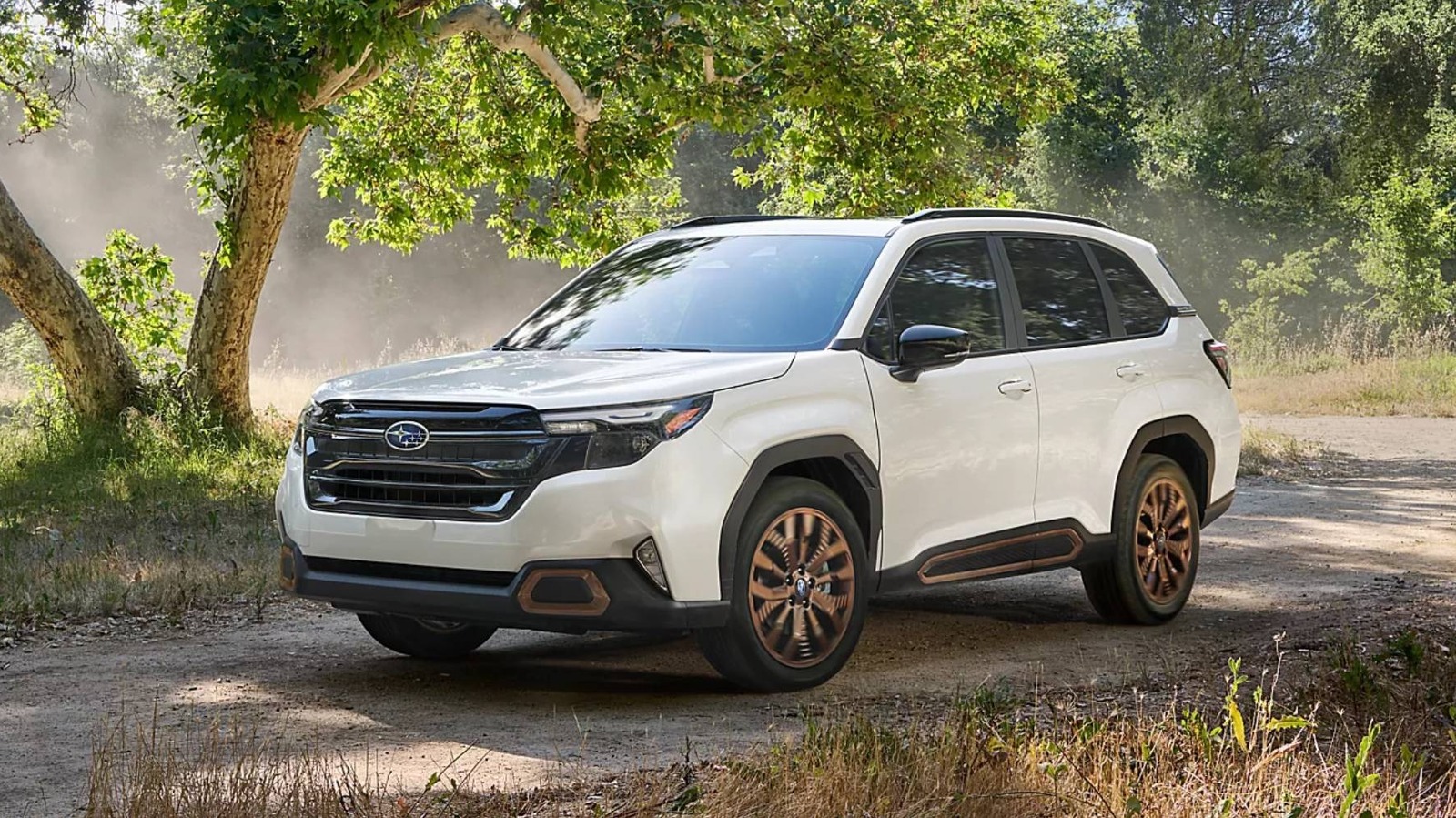
All-wheel drive (AWD) is an attractive feature in areas where winter conditions prevail for much of the year or when additional traction is required. Every major automaker acknowledges this and provides some form of AWD. Mercedes-Benz has a 4MATIC system, Audi features the legendary Quattro, and BMW offers the xDrive technology. Each of these systems aims to improve traction and stability, with their functionality ranging from basic on-demand systems to sophisticated setups that deliver independent power and control to each wheel. One system that consistently distinguishes itself is Subaru’s Symmetrical AWD, which utilizes a unique approach.
Advertisement
I have firsthand experience with Subaru’s AWD system, having owned a 2015 Subaru Forester 2.5i Premium trim for three years. Like all Foresters, my model came standard with Symmetrical AWD, and I had the opportunity to test it in various road conditions. Whether I drove on highways or bumpy East African trails, the system offered constant traction and stability throughout. Unlike conventional AWD systems that respond to wheel slippage by adjusting power distribution, the Symmetrical AWD continuously supplies power to all four wheels. This ensures better traction and stability and helps maintain control in both daily driving and severe weather conditions.
While other AWD systems may only activate when slippage is detected, Subaru’s system works to prevent slipping before it occurs. Aside from the Forester, the AWD is available on the Outback, Ascent, and Impreza, among several other models. Despite being marketed under one name, not all Subaru AWD systems are identical, though. Subaru employs up to four different AWD variations, which are tailored to different models and driving needs. With that said, how does Symmetrical AWD work?
Advertisement
How does Subaru’s Symmetrical AWD work?
The symmetry part of Subaru’s AWD system is what makes it unique. Most AWD vehicles like the Mitsubishi Evo use a transverse-mounted engine, as this engine makes a better fit for a front-wheel drive car design. This means that the engine is positioned sideways, with the transmission beside it. This creates an off-center differential, which means power may need to go through complex redirection before reaching the axles. These inefficiencies cause power loss and slower response times. Subaru takes an entirely different approach from the start.
Advertisement
The symmetrical AWD positions the boxer engine flat and low in a horizontally opposed design, perfectly along the vehicle’s centerline. Besides lowering the car’s center of gravity, this setup allows for the transmission to sit directly behind the engine while the driveshafts and suspension components are identical in length. This even weight distribution is what ensures direct and efficient power delivery to all four wheels.
One of the key aspects of Subaru’s AWD system is its full-time operation. Many AWD systems default to front-wheel or rear-wheel drive until traction loss is detected. While this is effective during the times you need it the most, it can result in a split-second delay before power is distributed to all four wheels. Subaru’s system, on the other hand, eliminated this delay by keeping the system engaged at all times. This way, there is uninterrupted traction, whether you’re driving on dry pavement, icy roads, or loose gravel.
Advertisement
Are all Subaru Symmetrical AWD systems the same?
While every Subaru Symmetrical AWD system follows the same principles, several variations exist to cater to different models and driving needs. The most basic version is the viscous coupling AWD, found in manual transmission Subarus. This system mechanically splits power 50:50 between the front and rear axles and reacts to wheel slip by directing torque to the wheels with the most traction. Although it is simple, reliable, and effective, it operates reactively, adjusting only when traction is already lost. During that time, it allocates 80% of its torque to the axle that has the most traction. Most CVT-equipped Subarus, except the WRX sedan, utilize Active Torque Split AWD. This system defaults to a 60:40 front-to-rear bias while continuously adjusting torque distribution based on real-time sensor data, providing a smoother and quicker response compared to the mechanical viscous coupling.
Advertisement
For performance-oriented driving, Subaru offers Variable Torque Distribution AWD, which is exclusively found in CVT-equipped WRX models. This setup begins with a 45:55 torque split, favoring the rear wheels to minimize understeer and enhance handling. A planetary-style differential and electronically controlled clutch collaborate to distribute power, dynamically adjusting up to an even 50:50 split when necessary. A more advanced AWD system was the Driver-Controlled Center Differential (DCCD) AWD, which was available on the discontinued WRX STI. This system featured a 41:59 rear bias torque split and multiple limited-slip differentials, allowing drivers to manually modify torque distribution. Subaru’s only non-traditional AWD system is the Electronic All-Wheel Drive found in the electric Solterra. It utilizes two electric motors — one on each axle — delivering power independently.
Advertisement
Strengths and weaknesses of Subaru’s Symmetrical AWD
One of the biggest advantages of Subaru’s Symmetrical AWD is that it is always engaged, meaning power is instantly available to all four wheels without delay. Subaru’s system proactively distributes power to maximize traction. Another key benefit is the affordability. Subaru includes some version of this AWD system as standard on nearly every model, except the BRZ, which means buyers get full-time AWD at a competitive price.
Advertisement
However, there are drawbacks. Instead of actively sending more power to wheels with better traction, Subaru’s symmetrical AWD relies on brake-based torque vectoring. It applies small amounts of braking force to shift power. For instance, when one wheel on an axle loses traction, the system applies the brake to that axle while sending most of the power to the rest. While this method improves handling, it isn’t as advanced as some competitor AWD systems that offer more sophisticated torque distribution. To top that off, full-time AWD has an impact on fuel efficiency. Since power goes to all four wheels, Subaru models typically consume more fuel compared to vehicles with on-demand AWD, which only activates when needed.
Advertisement



